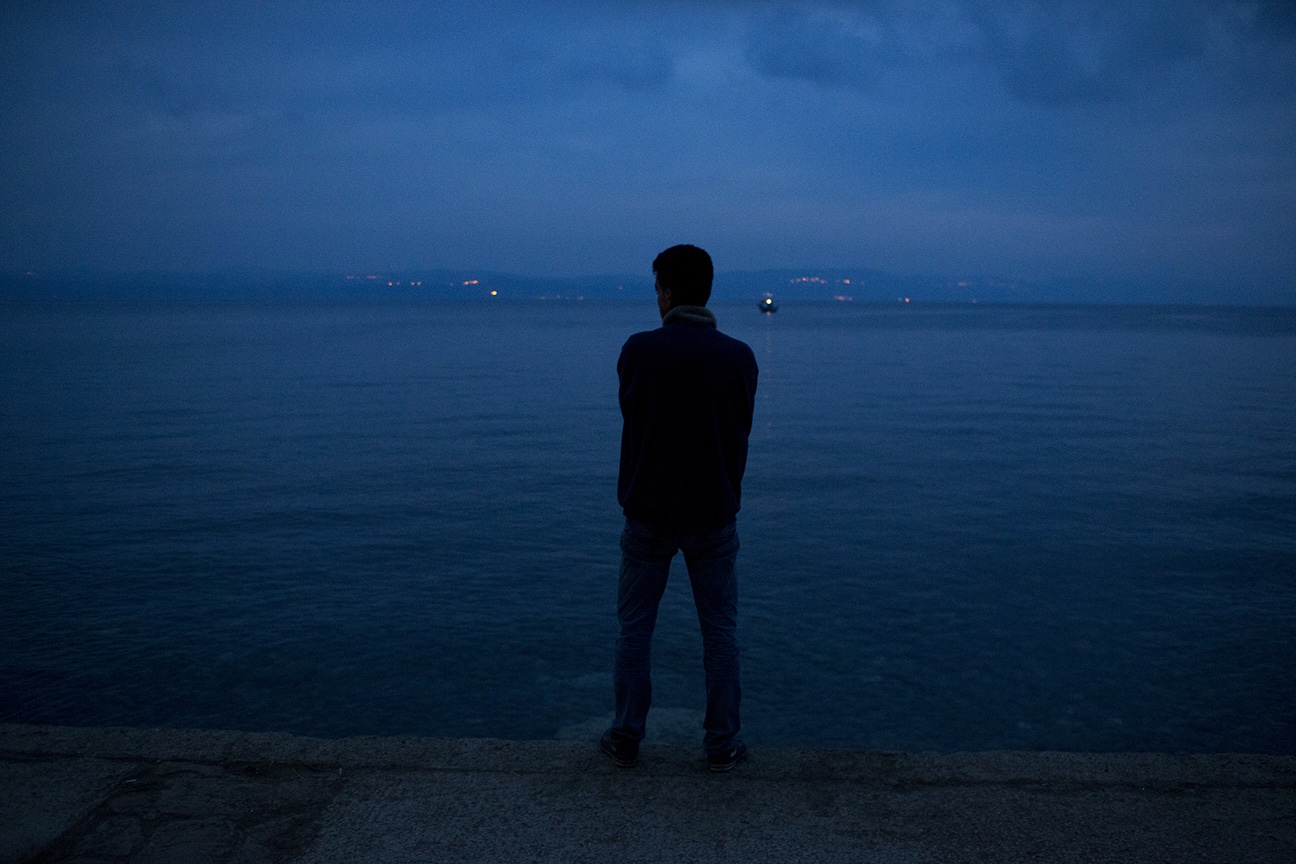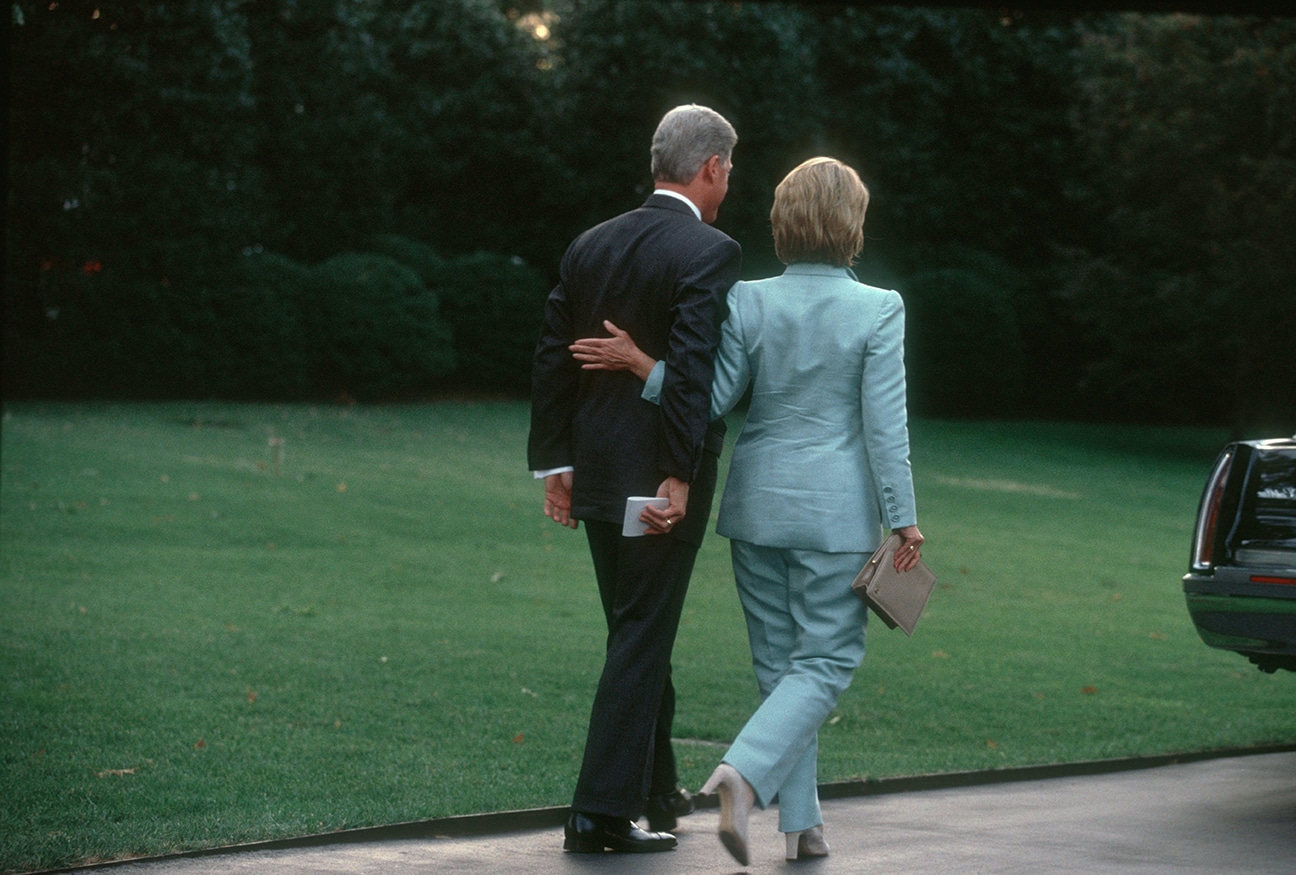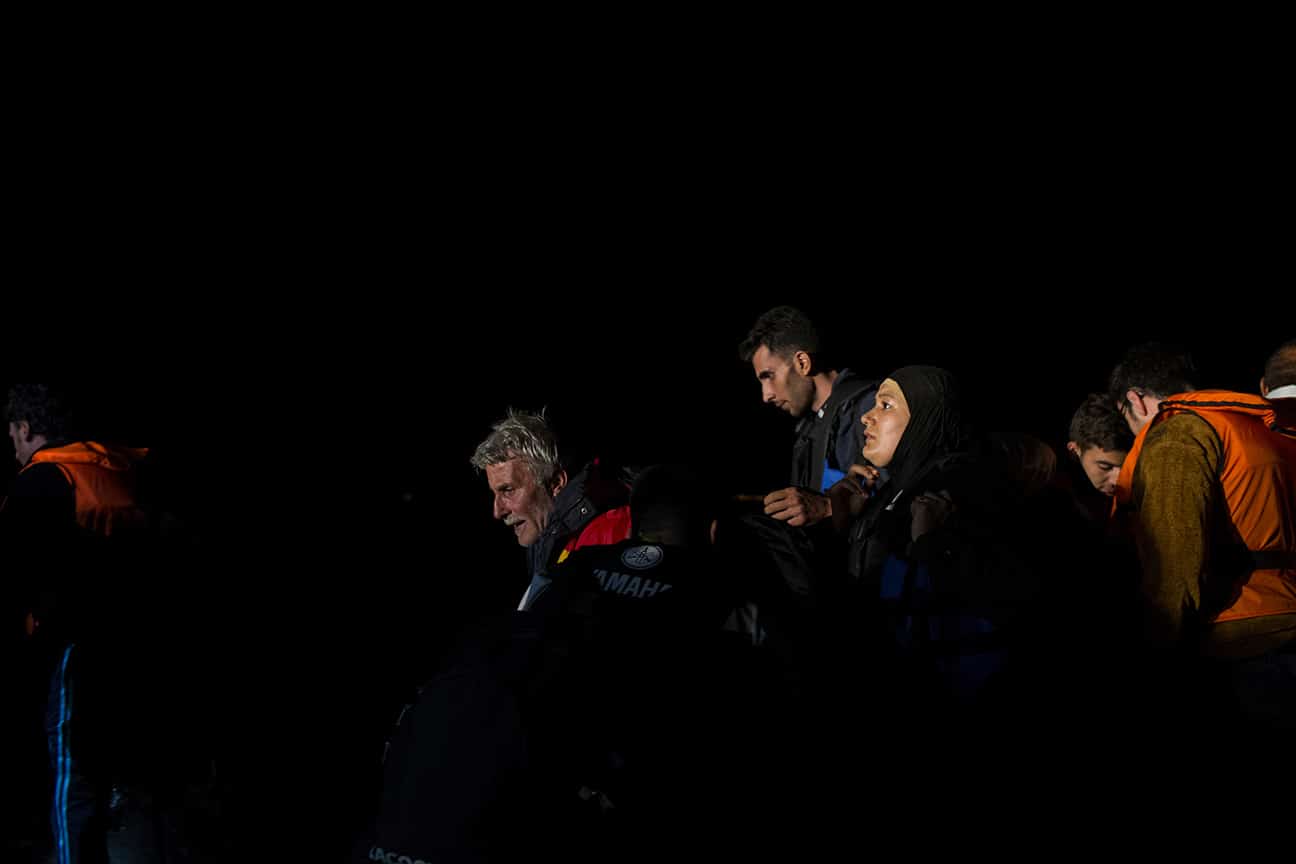Ron is a legend, one of the best there is. He is a photographer who often works in conflict zones. Going to these exceedingly dangerous places, he masterfully makes amazingly powerful photographs under very tense circumstances, some of which have been influential enough to actually move the political dialogue around a conflict. His goal is to create impact, not just with his images, but also through the schools he helps create. Impact, in its various forms, sounds like a pretty good goal for all of us.

When I met Ron this past summer at the Monacle conference in Madrid, what struck me was that he was the least judgemental listener I had ever encountered. Most people have an obvious internal conversation running while listening; he didn’t seem to. As I thought about it, if one were in a tent with an AK47s-carrying gang, a seeming lack of judgment would go a long way towards increasing one’s life expectancy.
Conflict photographers are a whole other animal than most of the photographers I know. We are sheltered. We work in studios, with nice lunches and are surrounded by highly-skilled aesthetes making beautiful images. The idea of working while having someone shoot at us is unimaginable. People in Ron’s line of work seem superhuman.

At 54, he is now not only doing photography. He has taken on a leading role in VII Academy, which is the educational branch of the VII Foundation. He is also doing a couple of films, among other things we ask him about:

Promoting Peace and Human Justice Through a Lens
How did you come to become a conflict photographer?
To be honest, I was just looking for a job where I didn’t have to sit in an office for 8 hours a day. Journalistic photography seemed kind of cool. My first foreign assignment was Panama, during the election there in 1989. The dictator nullified the election, which led to street protests. I took a photograph of Guillermo Ford whose bodyguards had just been killed. The next day, this photograph was on the front of a number of newspapers and then the covers of Time, US News and Newsweek – all the same week. It was an explosion for my career.

In December of that year, the US invaded Panama, and President Bush Senior gave a speech to the nation, and one of the justifications was the photograph I had taken. When I heard that speech, I understood my role as a photographer in a very different way. It wasn’t about my celebrity, or about making a lot of money.


It struck me that this was about amplifying the voices of those that cannot be heard loud enough. It went from wow, this is a very cool job, to this is something very important, that I think I can have some impact with.

When Your Workplace is Quite Literally a War Zone
How do you manage to do what you do while in these incredibly hostile places?
I’ve been incredibly lucky. I’ve been taken prisoner numerous times. I’ve done a number of things which were quite foolish, but have managed to survive. As more and more journalists were being killed and wounded, there became a movement to train journalists in what is known as a “hostile environment class,” which is taught by former special forces soldiers on how to survive in a war zone. These classes are now a needed requirement for anyone going to do this sort of work.
Working in conflict, there are definitely people shooting at you. They want to stop you from working. I am not willing to die for a photograph. I want to live for the next photograph.
Sometimes the circumstances are impossible, other times I take a calculated risk. It will be dangerous, but I still think I can do it.
If someone is shooting at me, I still want to get the best photograph possible. I don’t want to waste an opportunity. Where can I get to find some protection, and still document the situation? Otherwise, there is no point for me to be there. I have a responsibility.
I go as the eyes of the world. Some people can do this, some can’t. It’s not bragging, it’s just we all find what we are good at.

Storytelling is Like Extreme Dating?
When we met, what stood out to me was the sense I got of your unique ability to listen without judging.
I haven’t heard that before, but it makes sense. In any of these situations I am in – being with a President or some guy with an AK – the idea is that I should be able to represent what I am seeing, and that means listening to what they have to say. I’m not there to change the minds of those I photograph; I am there to tell their story. I tell my students it’s like extreme dating – you need to listen and let people tell their story.

What have you covered recently?
My recent photography has been on the issue of movement of people. I have been photographing in Greece, documenting people seeking asylum in Europe, as well as Latin Americans traveling in the caravan to the Mexico/US border. In addition to the photography I’ve done my whole career, I’m also dedicating more of my time toward filmmaking.
What are these films you are doing?
The feature-length one is with Lauren Walsh, professor at NYU, it’s called “Biography of a Photo.” It traces the stories and the effects of two photos I took: one from Panama in 1989, what I just described earlier; another from Bosnia in 1992, at the very start of the war there. The film explores what happened to these photographs after they left my camera. What was the impact each image had? What was each photo’s role in education, art, politics, and culture? In short, Lauren and I realized that these two photos had an enormous presence and impact in the regions where they were taken. Both of these photographs are still incredibly active and still being used to advocate for people who, decades later, are searching for justice and using the photos to try to achieve it. The film is looking at the power of photography, how photographs change the course of history and inspire that quest for justice.
Trailer for Biography of a Photo from Ron Haviv on Vimeo.
The other film I am co-directing with photographer Mark Peterson is called the “Picasso of Harlem.” It’s this amazing story of an aging artist named Franco the Great. He painted the metal gates on the storefronts of 125th Street in Harlem. He started this work in the 1960s and it is one of the reasons for the resurgence of Harlem with tourists and businesses. We started documenting Franco and these gates when NYC came out with a new law that required the old gates to be replaced by see-through gates. The painted gates are now disappearing; this piece of Harlem history is being erased, and Franco himself is getting older. This film tells this incredible story and captures the legacy of this unique Harlem artist
The Closer You Are, the Clearer the Picture
One of the amazing things about being a photographer is the access it gives.
Absolutely. During several years of the Clinton administration, I was the Newsweek White House photographer. I would be in the Oval Office, on Air Force One, and I would see all these amazing things. We have the ability to jump into people’s lives whether they are a president, soldier, refugee or a family and hopefully do them justice with the representation of what we see, then move on to the next thing. The idea is to have an impact, an impact for the better. You want things to change; you want results.
You look at the photo of the body of the young boy, Alan Kurdi, who washed up on the Turkish beach, and you look at the impact that photograph had on Angela Merkel and what she did in reaction to the migrant crises. It’s not the only reason, but it had an effect on her decision. It’s about the power of the image; it doesn’t happen all the time, but when it does its pretty incredible.
And where are you today?
I am in Bosnia right now. The VII Academy is launching its first class in Sarajevo, so I am working on that. I covered the entire break-up of Yugoslavia from 1991 to 2000. It’s nice to see the city alive again, but the bigger picture is that the country is sadly dysfunctional. This is very disappointing not just for me, but for all the people who went through the war, no matter what side they were on. It has led to a giant exodus of all the skilled people. For example, people say it’s even very difficult to find someone to fix a washing machine because they have all gone off to other parts of Europe to work.
Creating Education Around Visual Journalism
What are you doing there with the VII Academy?
In 2001, some friends and I decided to create an independent photo agency. We left the agencies we were with to create VII because we wanted to take more responsibility for ourselves and our work. We launched on Sept 9th, 2001. Two days later, one of our photographers made some of the most iconic images of the World Trade Center attack, and we have been covering the wars and terrorism around that event ever since.
At the same time, we realized that there was a need to document ideas and create projects that could only exist outside the realm of mainstream media. Gary Knight, a VII photographer, and I created a non-profit called the VII Foundation, which is funded by private donors. We also realized there was a real need for visual journalism education. So Gary took the lead to create the VII Academy, which is just launching.
Where is the Academy?
We have campuses in Sarajevo, Chiang Mai Thailand, and coming to Arles France. We are creating education around visual journalism, all free of charge, for students who could not normally afford to go and get traditional education at a New York University or USC or the like. In 2019, we have just given away over 400 scholarships. Last month I ran a workshop in Rwanda, for 80 students from all over Africa.
What sort of ages are we talking about?
The students are roughly between 18 and 35, although there are often some older students – people who are doing career changes. The teachers range in age. At VII, we have a number of highly experienced photographers and teachers in my age group.
What are you working for in the future with the Academy?
Our ambition is to have 10% of the Academy graduates have an impact in their country and societies, which would be an amazing accomplishment for us. Also, the Foundation part of VII is working on a number of projects, one of which is called “Imagine, Reflections on Peace.” It’s a series of films and conferences, all around the definition of peace. We sent writers and photographers back to countries they had covered, to find out if peace is just the absence of a bullet, or is it something more. Cambodia, Northern Ireland, Bosnia, Lebanon, Rwanda, and Columbia are the countries we did. It is a comprehensive view of what peace is that we feel has not been done before. It will be a book that will be out in March, and then it will be a series of exhibitions, the first of which will be at The Red Cross Museum in Geneva in 2020.
Do you see yourself continuing to do conflict photography?
I’m not running to every single conflict now, but there are and will be times when there will be a situation that I feel strongly about where I feel I can contribute to having an impact.
LEAVE A REPLY
The ideas expressed here are solely the opinions of the author and are not researched or verified by AGEIST LLC, or anyone associated with AGEIST LLC. This material should not be construed as medical advice or recommendation, it is for informational use only. We encourage all readers to discuss with your qualified practitioners the relevance of the application of any of these ideas to your life. The recommendations contained herein are not intended to diagnose, treat, cure or prevent any disease. You should always consult your physician or other qualified health provider before starting any new treatment or stopping any treatment that has been prescribed for you by your physician or other qualified health provider. Please call your doctor or 911 immediately if you think you may have a medical or psychiatric emergency.



What an amazing conversation and inspirational direction his career has taken him. I am in a mid-life career change and have been working in Indonesia and Africa on conservation and impact photography. Look forward to seeing how the Academy expands and I can participate!